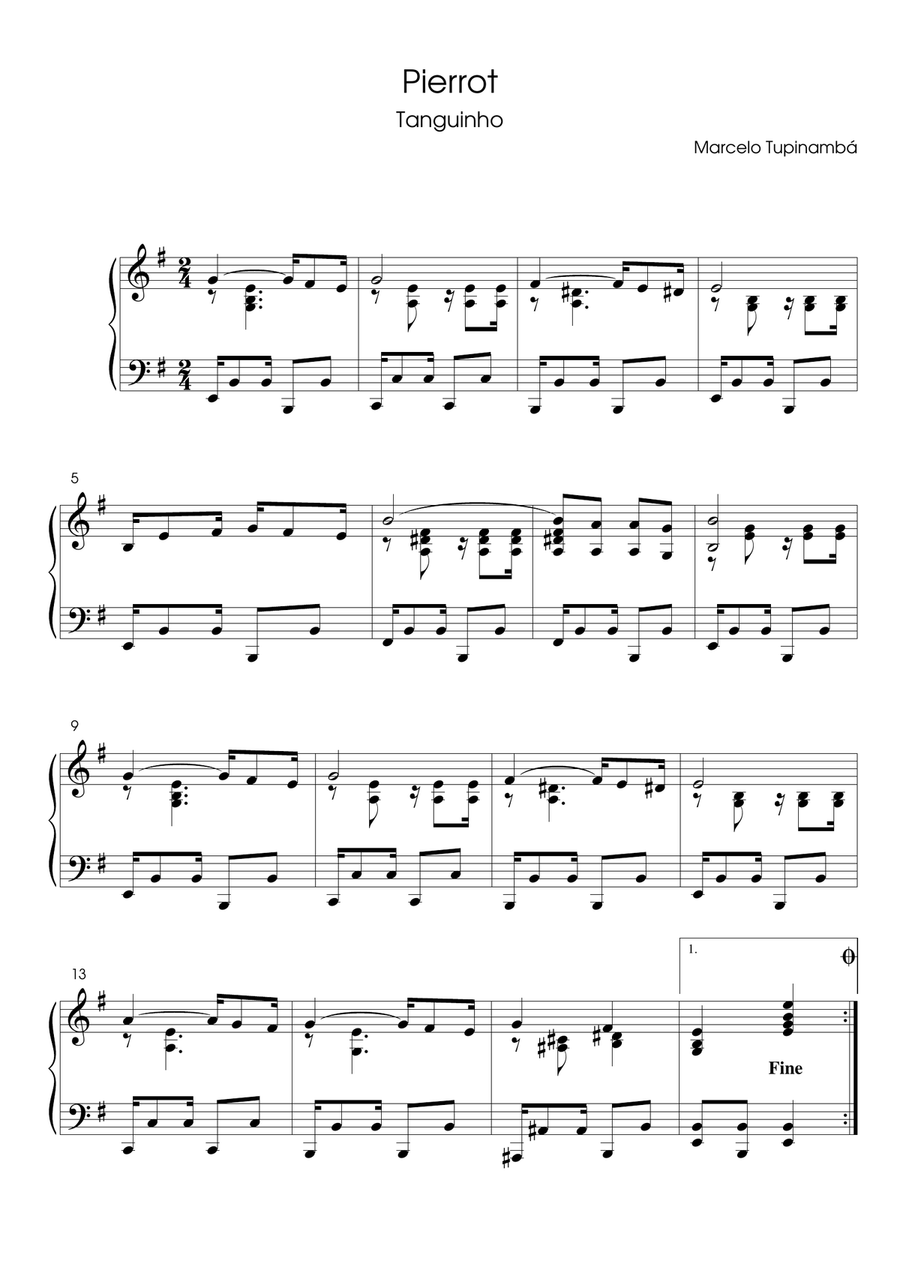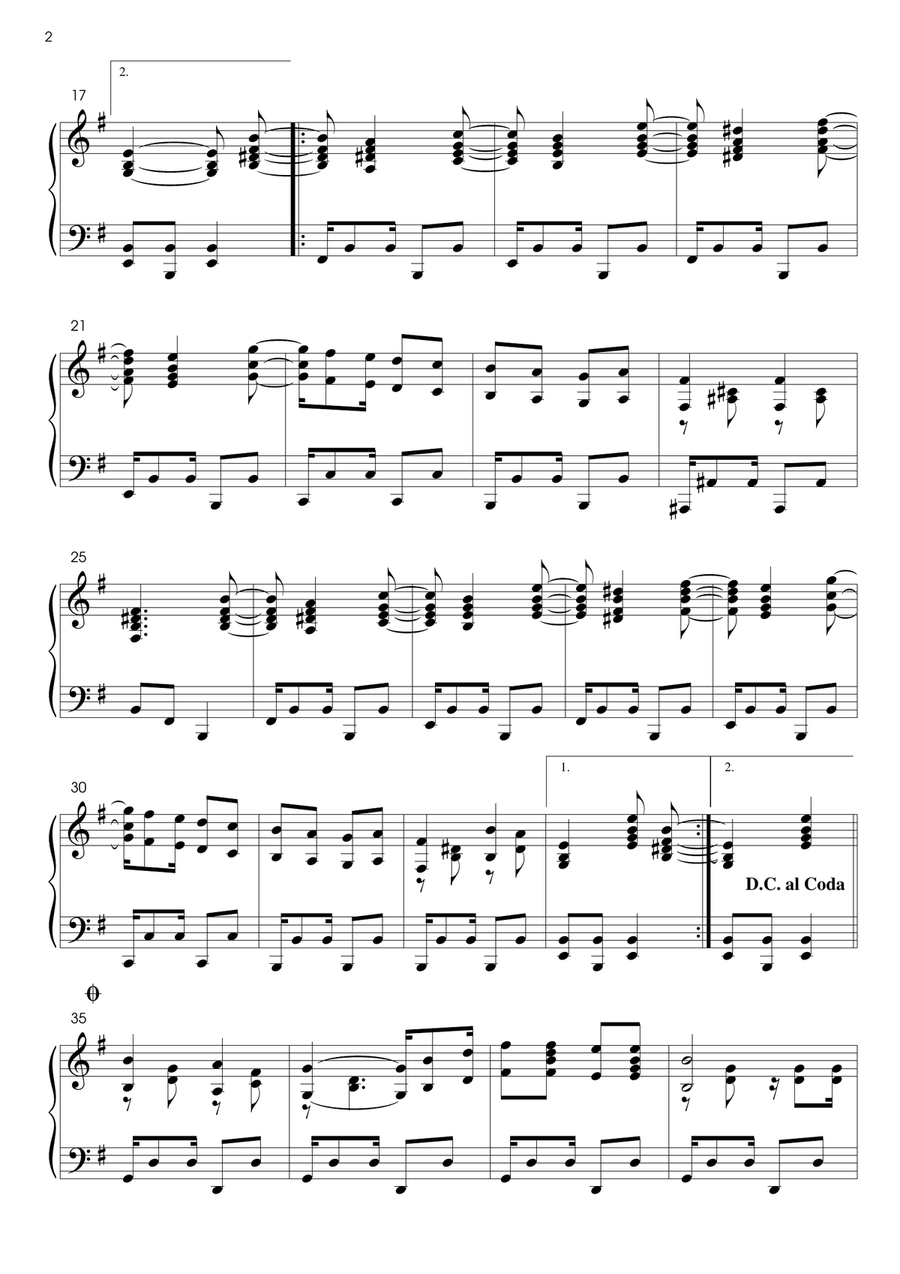Piano, Piano Solo - Level 5 - Digital Download
SKU: A0.1639658
By Alexandre Dias. Composed by Marcello Tupynambá. Arranged by Luiz C. Teixeira. This edition: pdf, streaming. 20th Century, 21st Century, Chamber, Classical, Early Music. Score. 3 pages. Luiz C Teixeira #1207296. Published by Luiz C Teixeira (A0.1639658).
"Pierrot" by Marcello Tupynambá (1889–1953) is a captivating Brazilian tango that blends European salon music with distinctly Brazilian sensibilities. Tupynambá, a lesser-known but important figure in early 20th-century Brazilian music, was a pianist and composer who contributed to the choro, maxixe, and tango brasileiro genres.
Musical and Historical Context
Brazilian Tango vs. Argentine Tango
Unlike the dramatic, syncopated Argentine tango, the Brazilian tango (early 20th century) was more lyrical and salon-like, influenced by polkas, maxixe, and European ballroom dances.
By the 1910s–1920s, Brazilian composers like Ernesto Nazareth and Marcello Tupynambá infused tango with local rhythms, creating a hybrid style.
Pierrot as a Symbol
The title references Pierrot, the melancholic clown from European commedia dell’arte, often associated with unrequited love and poetic sadness—a fitting mood for a tango.
Musical Analysis
Form & Structure
Likely in binary (AB) or ternary (ABA) form, typical of early 20th-century salon tangos.
Section A: Lyrical, wistful melody with a gentle rhythm.
Section B: Slightly more animated, possibly with subtle syncopation or chromaticism.
Harmony & Rhythm
Harmonic language: Late Romantic/early popular influences (e.g., modulations, secondary dominants, maybe a touch of maxixe syncopation).
Rhythm: Unlike Argentine tango’s sharp habanera rhythm, Brazilian tango often had a smoother, piano-driven flow (closer to a polka-mazurka).
Melodic Style
Expressive, singing lines with portamento (sliding notes) and delicate phrasing, evoking nostalgia.
Possible use of minor key or modal shifts to enhance the "Pierrot" theme of melancholy.
Why Is This Piece Significant?
Bridge Between European and Brazilian Music
Tupynambá’s work, like Nazareth’s, helped shape the transition from polka and tango to choro and samba.
Represents a time when Brazilian composers were nationalizing European forms.
A Rare Gem of Brazilian Tango
While Argentine tango overshadowed its Brazilian cousin, pieces like "Pierrot" preserve a unique stylistic blend.
Emotional Depth
Unlike many lively maxixes or choros, this tango leans into romantic introspection, showing Tupynambá’s range.
Comparison to Other Brazilian Tangos
Ernesto Nazareth’s "Odeon" – More rhythmic, almost ragtime-influenced.
Chiquinha Gonzaga’s "Gaúcho" – Closer to a maxixe, with Afro-Brazilian syncopation.
"Pierrot", in contrast, feels more intimate and European, yet with a Brazilian harmonic warmth.
Legacy & Revival
While not as famous as Nazareth’s works, "Pierrot" deserves attention as a charming example of early Brazilian popular music.
Modern choro and early jazz ensembles sometimes revisit these tangos, appreciating their hybrid elegance.
This product was created by a member of ArrangeMe, Hal Leonard’s global self-publishing community of independent composers, arrangers, and songwriters. ArrangeMe allows for the publication of unique arrangements of both popular titles and original compositions from a wide variety of voices and backgrounds.
Digital Downloads are downloadable sheet music files that can be viewed directly on your computer, tablet or mobile device. Once you download your digital sheet music, you can view and print it at home, school, or anywhere you want to make music, and you don’t have to be connected to the internet. Just purchase, download and play!
PLEASE NOTE: Your Digital Download will have a watermark at the bottom of each page that will include your name, purchase date and number of copies purchased. You are only authorized to print the number of copies that you have purchased. You may not digitally distribute or print more copies than purchased for use (i.e., you may not print or digitally distribute individual copies to friends or students).





